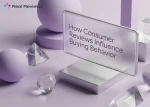
Honest Customer Reviews vs. Marketing Tricks
Many modern customers rely on brand reviews because they need a guiding star. Consider it the consumer decision-making process. The goal may be buying a new car, a smartphone, or even a book. The key aspect is to regard reviews as an important experience for those who have already walked your path. But here comes a very important aspect, the name of which is honesty. What if you have to deal with paid reviews?
Unfortunately, the rise of rigged reviews is alarming. For example, more than 50% of reviews on Amazon electronics can be written for money. That is why the Federal Trade Commission announced the final rule banning fake reviews and testimonials. On the one hand, this can be easily explained because entrepreneurs want to promote their goods by any available means due to high competition. On the other hand, false reviews undermine customer trust, complicating the search for goods and services worth people's attention.
Imagine seeing other people's comments about the goods and services you are interested in. Are they real or fake? This is a good question since some comments mimic real ones. People can indicate important details and add emotional triggers or other stimulating elements. All these tricks are aimed at increasing such a parameter as brand trust. Fortunately, not all business owners resort to gray marketing tricks.
Fortunately, not all companies go to extremes in pursuit of such a parameter as customer trust. They do not try to strongly influence positive opinions and moderately encourage people to leave their opinions about the product and services. The problem is that many reviews and testimonials are AI-generated, which misleads many people. Let's understand this intricacy of facts, problems, and their resolution. There are many important aspects that you should know.
Honest Customer Reviews: What They Are and Why They Matter
Let's discuss honest customer reviews and why they are critically important for companies and customers. In short, it is a form of authentic feedback provided by people who have purchased a particular product or service. Unlike a paid opinion, a real review contains only the experience a real person has encountered. Accordingly, all the advantages, disadvantages, emotions, and opinions are real. For many potential buyers, honest reviews are beacons in the pitch darkness of the global information ocean.
The importance of trustworthy reviews is difficult to estimate in financial equivalent, as they can greatly impact businesses and consumers. Of course, forming a trustworthy attitude towards a brand is one of the first details. Online buyers need help to inspect a product or service themselves. They rely only on the description of websites, photos, and videos. That is why real reviews are so important.
Let's stick to the facts. A study conducted by Abdulaziz Elwalda and Kevin Lü at Brunel University highlights the significant impact of online customer reviews on consumers' purchasing decisions. In other words, such a parameter as consumer trust is established only through real reviews. The study found that reviews not only build trust but also shape the behavioral patterns of many consumers. By getting important insights from testimonials, people can make more confident and informed purchasing decisions.
Another important study conducted by Tao Chen, Xiong Ying, and a whole group of experts focused on the role of honest reviews in informed decision-making. A team of Chinese scientists used eye-tracking technology to establish the critical importance of reviews for buyers. The study showed that testimonials can easily change an opinion about a product in the opposite direction. It is worth noting that the test group of women paid attention primarily to negative reviews, while men looked for information about the product first.
In other words, informed decision-making is an important process only possible with customer loyalty and trust. People must trust the brand, and reviews play a key role. Having the opportunity to rely on the experience of other buyers, you potentially expect and prepare yourself for positive results.
Common Marketing Tricks With Reviews
As you have already understood, the Internet is not where ponies and unicorns play, and the rainbow shows the only right direction. The World Wide Web is more like a pit where thousands of poisonous snakes crawl, mimicking harmless creatures. This is how fake bad reviews can be briefly described. Let's pay attention to three common marketing tricks with reviews:
- Fake reviews. Typically, this category includes reviews that have no real human experience behind them. These are completely artificial online comments aimed at shaping public opinion about a certain product or service. A good example is the skincare brand Sunday Riley, which forced its employees to post positive reviews on Sephora’s website. The review expansion aimed to try to whitewash the brand due to the large number of negative reviews. Fortunately, the Federal Trade Commission noticed this fraudulent scheme in time.
- Review manipulation. What makes your brand trustworthy? A positive online reputation is probably the most obvious answer. That is why companies with a notorious reputation try to implement review manipulation into their marketing strategy. Such a strategy includes cherry-picking only favorable reviews to display or suppressing negative feedback. A good example is Samsung, which implemented the so-called "review gating" approach while releasing its first model of foldable smartphones. The number of bends to failure was four times less than expected, so the company used fake reviews examples to flood the Internet with the required opinions.
- Purchased reviews. What are paid reviews? These are comments describing the experience of using certain products or services. Such content is ordered from content agencies that form a whole pool of reviews of different emotional colors. The purpose of paid reviews is to motivate people to buy what you offer and denigrate your competitors. A striking example of such manipulation is every fifth seller on Amazon trying to implement fake customer reviews in anticipation of a sales boost. That is why Amazon took legal action against several companies that were found to be buying fake reviews in 2021.
It is worth noting that such manipulations usually look quite primitive. The mass generation of reviews affects their quality. Many marketing agencies even use neural networks to create thousands of comments. Many of them look weird. The experience of reading such reviews can be compared to chewing a bar of soap. That is why it is so important to analyze what you read carefully.
How to Recognize Fake Reviews
As you can see, the entire retail industry consists of partially manipulative reviews. That is why people need to be extremely careful about following recommendations from strangers. Also, you should know how to spot fake reviews. In most cases, this is not rocket science, but the need to follow certain rules. Here are your actions as a buyer:
- Reviewer profile check is the first strategy to recognize fake reviews. Let's say a platform allows you to learn more about a reviewer. Look at the reviewer's profile to see their review history. New profiles with a low rating and high activity during certain periods look suspicious. If a person generates 5-star ratings for a certain company or product group, you have a bot account in front of you. Here is how to spot fake reviews. Bots usually have generic names and blank profiles without photos or links to social media.
- Content analysis is your second step. Look for overly positive or negative language because this is the easiest way to detect fake reviews. Your opinion is manipulated if emotions and slogans like “best product ever” are pushed to the forefront without a solid background. Also, check for repetitive phrasing because many paid reviews are based on scripted patterns. Copywriters are given detailed instructions to highlight certain facts that are easy to spot. Generally, very short or long reviews should also arouse your suspicion. It is not a fact that they are part of the “real or fake” battle, but real people use more balanced writing approaches.
- Look for duplicate brand mentions. Typically, scammers post the same fake product reviews on multiple platforms. They may also partially change sentence structures, but the general core always looks similar. Use tools like Fakespot or ReviewMeta to see if the same text appears elsewhere. This is the easiest way to identify such parameters as “characteristics of a fake person.”
As you can see, fake review detection is not rocket science. By analyzing the content, you can easily find suspicious patterns that can lead you to the truth. As a rule, many companies act like amateur puppeteers. The basic reviewer profile check and other activities described above can show you the truth.
Traits of Honest Reviews
Surely, now you understand why even one fake reviews checker is better than reading hundreds of forums with generated comments. But what are the traits of honest reviews? Can they be identified as quickly as paid comments? Luckily, you can actually identify real reviews, and it won’t take you that long. Look for detailed descriptions! Real people can share in-depth insights into their experience using a certain product or service.
For example, a woman bought a hair conditioner. In the review, she wrote that the bee milk extract positively affected the pores in her hair and gave it volume. She may also note that at first, the hair conditioner smelled like dishwashing liquid, but over time, the smell became more honeyed. Will fake companies waste their time on this? Most likely not, because they need thousands of comments.
Balanced feedback is another important indicator for online reviewers. Typically, real people leave comments about the pros and cons of products in a neutral tone. They are not trying to sell you anything. Let's say you want to buy a new iPhone and are reading reviews. A real person might write, "Oh yeah, the new iPhone has a great battery life and a fast USB Type-C port. I also like the matte titanium finish because it doesn't leave fingerprints. But otherwise, it's still the same smartphone without any visible improvements."
Specific examples are another point that helps to spot the fake reputation patterns. Real reviews often contain real-life scenarios and descriptions of what people liked. You can also count on measurable outcomes rather than bravado and trivial praise of something. Here is an example of how real comments differ from fake ratings. Let's say the owner of the Asus Rog Ally console bought a memory card for one terabyte. He wrote that he was able to install a dozen of his favorite games, but due to the close location of the Micro-SD slot and the radiator, the memory card failed after a month. This is a real review and not groundless praise of the product.
Tips for Avoiding the Pitfalls of Marketing Reviews
Before purchasing, ensure the online seller has been verified legit by checking reviews from multiple sources. Reading comments on one site is not enough. Find at least three sources with a positive reputation. However, even trusted review sites like Sitejabber or Trustpilot do not guarantee 100% honesty. So, how do I know if an online company is legitimate? This is a good question. Having collected basic information, you can switch to their critical analysis.
Such a parameter as brand trust can be analyzed through cross-reference reviews. The opinion of industry experts can also be considered an extra trigger. However, critical thinking is the most valuable tool. Be skeptical of any opinions and recommendations. Even trusted reviews written by real people can be subjective. People describe their experiences and conclusions, which are not necessarily true.
Analyze the language and style used by commentators on different platforms. All websites with reviews contain both real and fake comments. The latest ones usually look robotic or deliberately realistic. This parameter can be described as an excessive desire to look like the opinion of a real person. At the same time, the amount of slang, abbreviations, and other language triggers are the keys to identifying a hoax.
Conclusion
As you can see, the “fake vs real brands” battle will be eternal. You will always encounter false feedback and attempts to shape your opinion as the seller needs it. Try to rely on the practices described earlier to identify fake comments early. Check if reviews are real. Analyze texts using software and common sense to filter out lies.
Adhere to ethical practices, look for patterns, and repeat narratives. Do not forget that honest brands rarely resort to tools to boost popularity. Consumer trust is the parameter they strive to achieve most of all. That is why real customer reviews do not look like marketing slogans or attempts to manipulate opinions. So, is this a real company? Read reviews and draw your own conclusions!
05.02.2025




